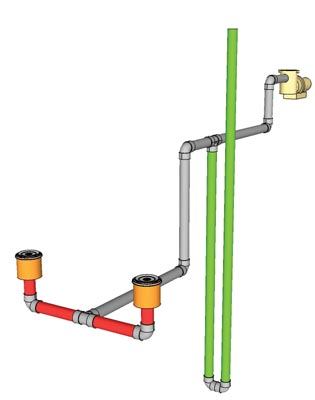Among the possible vacuum-breaking systems named in the Virginia Graeme Baker Pool and Spa Safety Act is a suction-limiting vent.
(The other two options — gravity drainage systems and drain disablement — are meant to prevent a vacuum from forming altogether and are not discussed here.)
Suction-limiting vents are produced on site by a plumber at the time the pool or spa is constructed. The process involves branching an independent pipe off the drain line and exposing it to atmosphere.
This vent is filled with water. If a vacuum forms in the suction line, water is pulled from the vent pipe, thereby eliminating the hazard.
Because suction-limiting vents require only plumbing, these systems can be inexpensive.
However, some say each one should be engineered to the specific pool to account for issues such as the length of pipe and vacuum inherently built into the system. This can guarantee that the vent line performs quickly, but it also can offset the cost savings gained over using an SVRS or automatic pump shut-off.
With no moving parts, some like the vent’s chances of functioning without incident over long periods of time. But there are other professionals who have concerns about these systems.
They cite the fact that, rather than being produced in a controlled manufacturing facility, suction-limiting vents rely solely on the expertise of the on-site installer and his or her willingness to have the plumbing properly engineered.
Secondly, the pipe is not part of the closed circulation system, so the water inside doesn’t move and can become stagnant.
In addition, the pipe is open to atmosphere, allowing in dirt and bacteria, and leaving some to worry that the vent could prove a breeding ground for waterborne illnesses.
However, this concern has been debunked, says Steve Barnes, chairman of APSP’s Technical Committee, who likens the vent to a spa air-intake pipe that operates under the same conditions.
